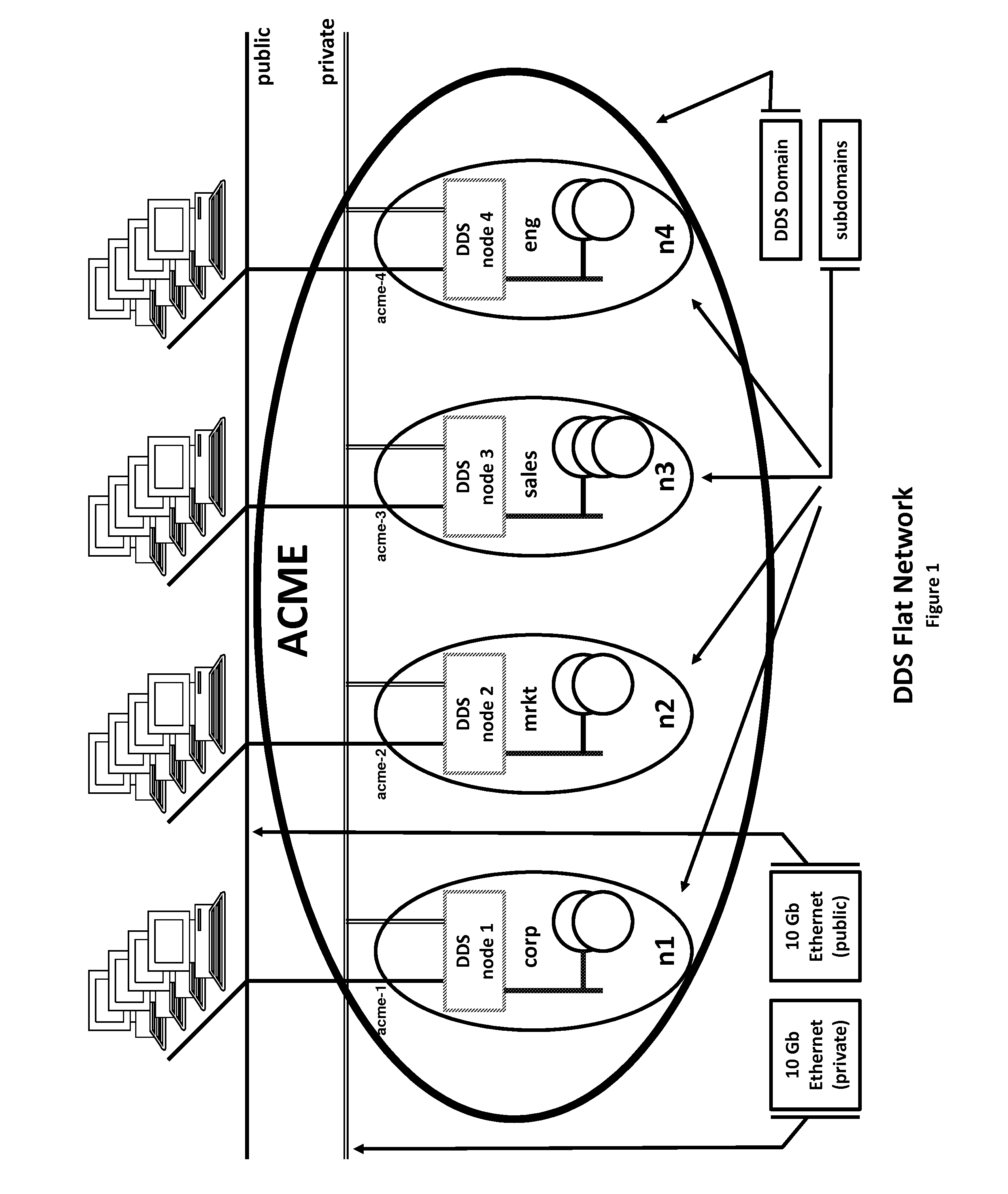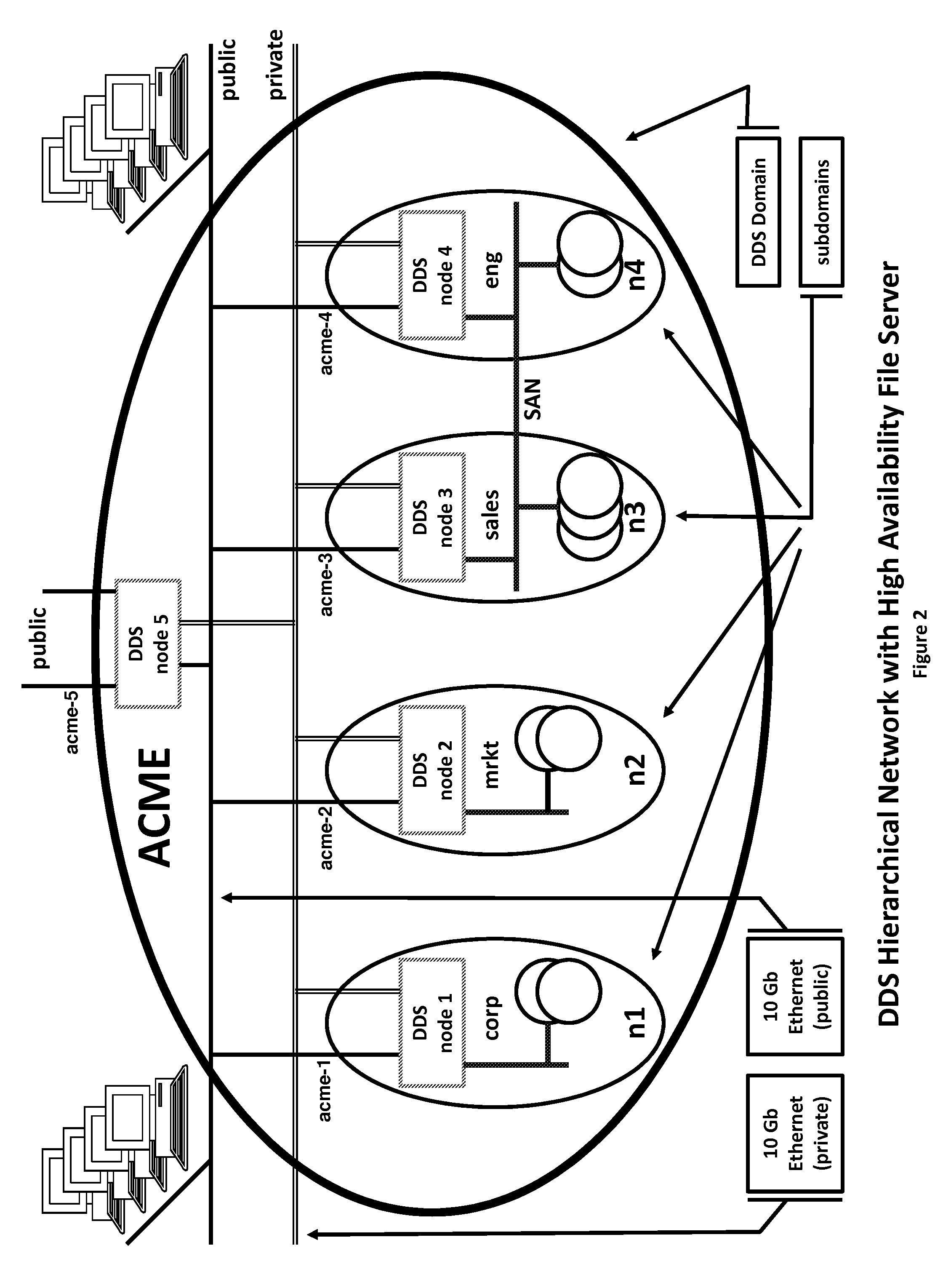Using projected timestamps to control the sequencing of file modifications in distributed filesystems
a technology of file modification and projected timestamps, which is applied in the direction of instruments, digital computers, computing, etc., can solve the problem of only performing pre-fetching
- Summary
- Abstract
- Description
- Claims
- Application Information
AI Technical Summary
Benefits of technology
Problems solved by technology
Method used
Image
Examples
Embodiment Construction
[0011]This Summary is provided to introduce a selection of concepts in a simplified form that are further described below in the Detailed Description. This Summary is not intended to identify key features or essential characteristics of the claimed subject matter, nor is it intended to be used as an aid in determining the scope of the claimed subject matter.
[0012]One example embodiment includes a computing system where a data request has been passed between a file service proxy cache node and a downstream site, the file service proxy cache node being a network node located between a client system and the origin file system node, a non-transitory computer-readable storage medium including instructions that, when executed by the file service proxy cache node, performs the steps dispatching a file access request to the downstream site. The instructions also perform the step receiving a response to the file access request. The response includes a version number of a file image cached at...
PUM
 Login to View More
Login to View More Abstract
Description
Claims
Application Information
 Login to View More
Login to View More - R&D
- Intellectual Property
- Life Sciences
- Materials
- Tech Scout
- Unparalleled Data Quality
- Higher Quality Content
- 60% Fewer Hallucinations
Browse by: Latest US Patents, China's latest patents, Technical Efficacy Thesaurus, Application Domain, Technology Topic, Popular Technical Reports.
© 2025 PatSnap. All rights reserved.Legal|Privacy policy|Modern Slavery Act Transparency Statement|Sitemap|About US| Contact US: help@patsnap.com



